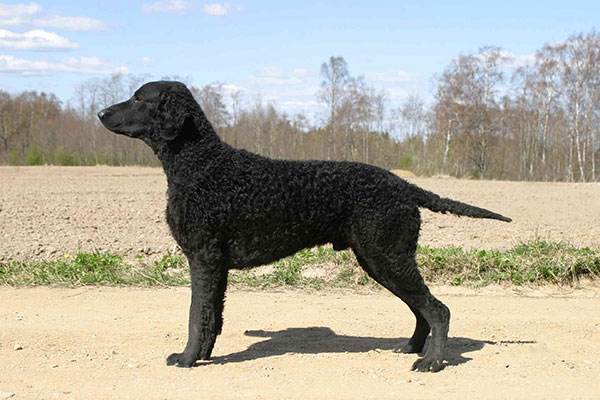Curly-Coated Retriever
IUCN
LCBasic Information
Scientific classification
- name:Curly-Coated Retriever
- Scientific Name:
- Outline:Carnivora
- Family:Canidae
Vital signs
- length:63.5-68.5cm
- Weight:30-35kg
- lifetime:8-12 year
Feature
One of the oldest retrievers, with an amazing sense of smell and memory
Distribution and Habitat
Originated from the UK
Appearance
The head is a wedge-shaped head longer than it is wide, easily distinguished from other hounds, and in proportion to the body, with the length of the foreface equal or nearly equal to the length of the occipital skull. When viewed from the side, the planes of the face are parallel. The stop is shallow and sloping, where the width of the foreface is slightly narrower than the width of the occipital skull, but the junction of the two is smooth, and the head is almost straight, tapering to a point at the nose, with clean lines and no coarseness. The eyes are almond-shaped, large but not prominent. They are black or brown in black dogs and brown or light yellow in liver dogs. The ears are small, set slightly above the corners of the eyes, and extend close to the head. The occipital skull is flat or nearly flat. The muzzle is wedge-shaped. The lines are smooth, tapering to a point, neither sharp nor blunt, and slightly rounded at the base. The muzzle is level and not crooked. The jaw is lon
Details
As the name suggests, the Curly-Coated Retriever has curly hair.

In the absence of early records, the exact origin of the Curly-Coated Retriever is subject to some speculation, but there is no doubt that it is one of the oldest breeds of hounds classified as a retriever, and it is generally believed that this breed originated from the English Water Spaniel and the hunting setter in the 16th century. Others assert that the Irish Water Spaniel was its ancestor, and that some of the Labrador Retriever's characteristics can be traced in it. It is more likely that it was the offspring of many crosses between the breeds, as evidenced by the liver-red color changing to black and curly hair. Whatever hound was its ancestor, it is possible to conclude that one breed combined the characteristics of the Water Spaniel and the Setter. The St. John Newfoundland, which combined these characteristics, was first recorded to have been brought to England in 1835 by an overseas ship importing cod from Newfoundland. This unusual St. John's dog was sometimes referred to as a Labrador by some early authors. This fact adds some confusion to the Labrador Retriever.
In 1860, the Curly-Coated Retriever was first shown to the public in England as one of the first breeds to be officially used for hunting. In 1889, the breed was exported to Denmark, where it has long been used to hunt water ducks and California quail. In Australia, they are also used to hunt water ducks in the swamps and saltwater lakes on the Murray River. Their reliable skills in the water and keen hunting ability are widely appreciated. The first kennel club for the Curly was established in the UK in 1896. The breed was introduced to the United States as early as 1907, but was first registered with the AKC in 1924. As early as 1880, the Curly was repeatedly crossed with the Poodle. This cross gave it a dense curly coat, and as a popular hunting dog after the Old English Water Retriever, the Curly was first shown at the Birmingham Show in England in 1960.
Despite its attractive appearance, strong body and extraordinary working ability, it is difficult to see the Curly. It is said that because the Curly Retriever is different from other breeds and is very picky about food, few people take this dog with them when hunting.
Many people claim that the Curly Retriever is easy to train. This dog is enthusiastic, hardworking, and suitable for living in water. More importantly, its thick coat allows it to adapt to hiding and waiting for a long time. It is a lovely, loyal partner and an excellent guardian.
Protect wild animals and eliminate game.
Maintaining ecological balance is everyone's responsibility!








